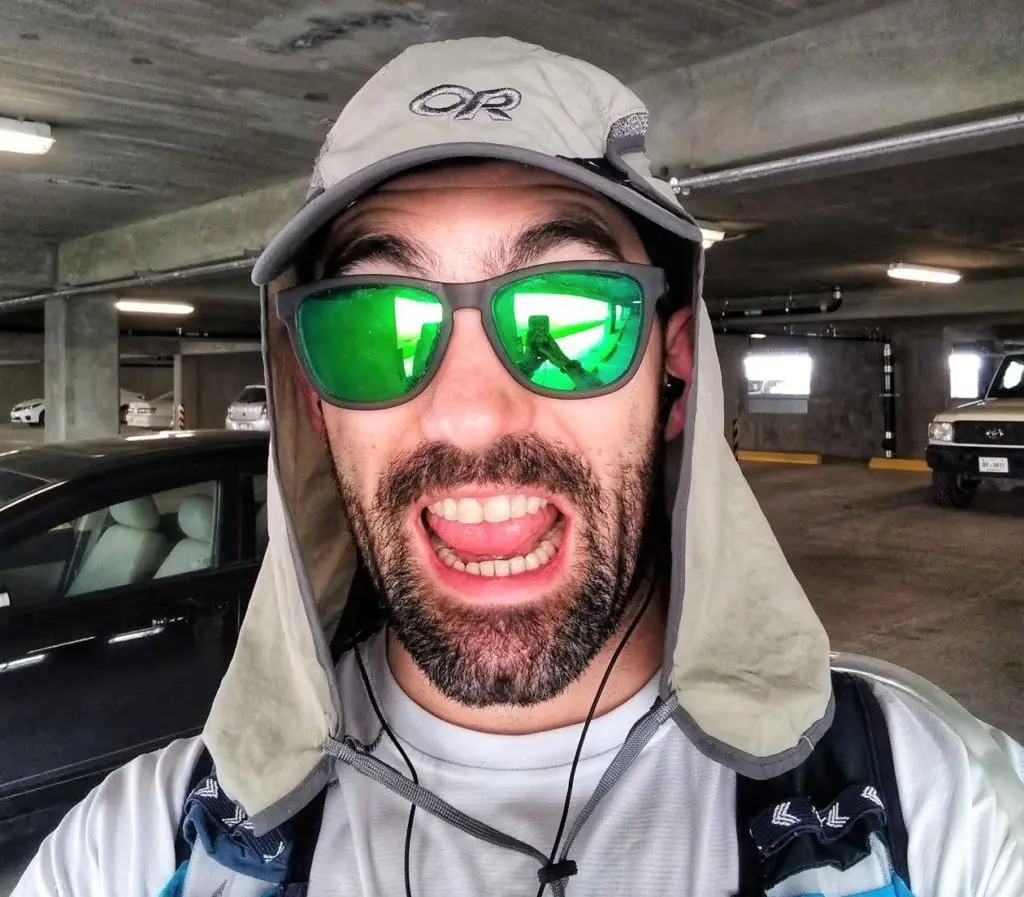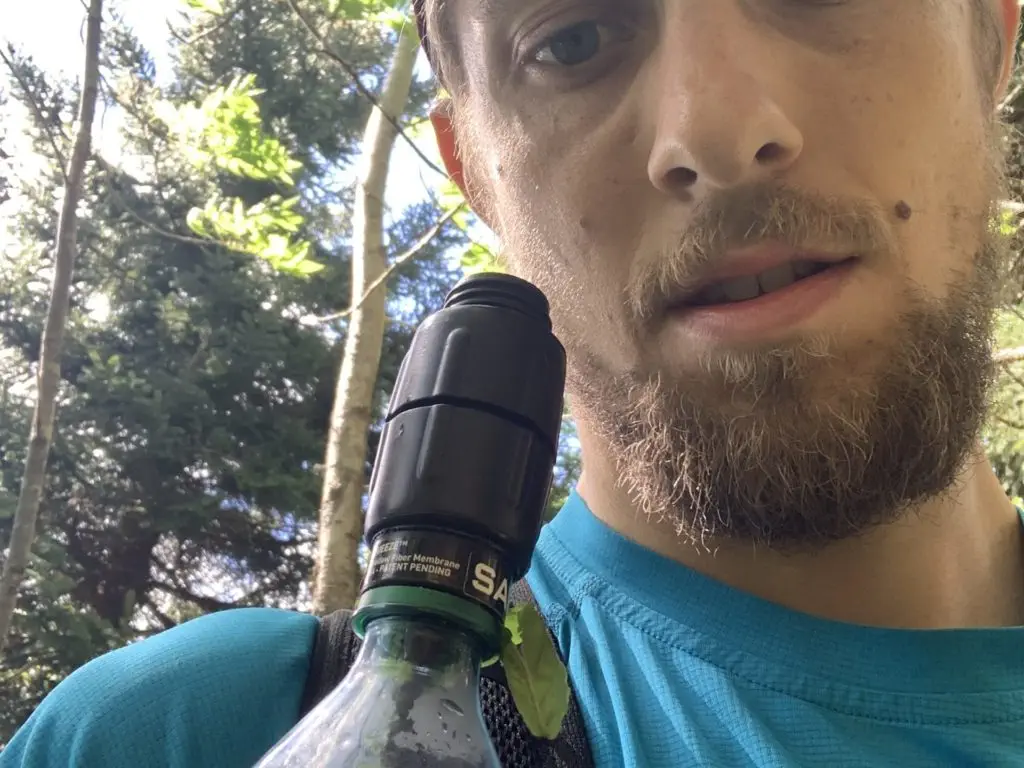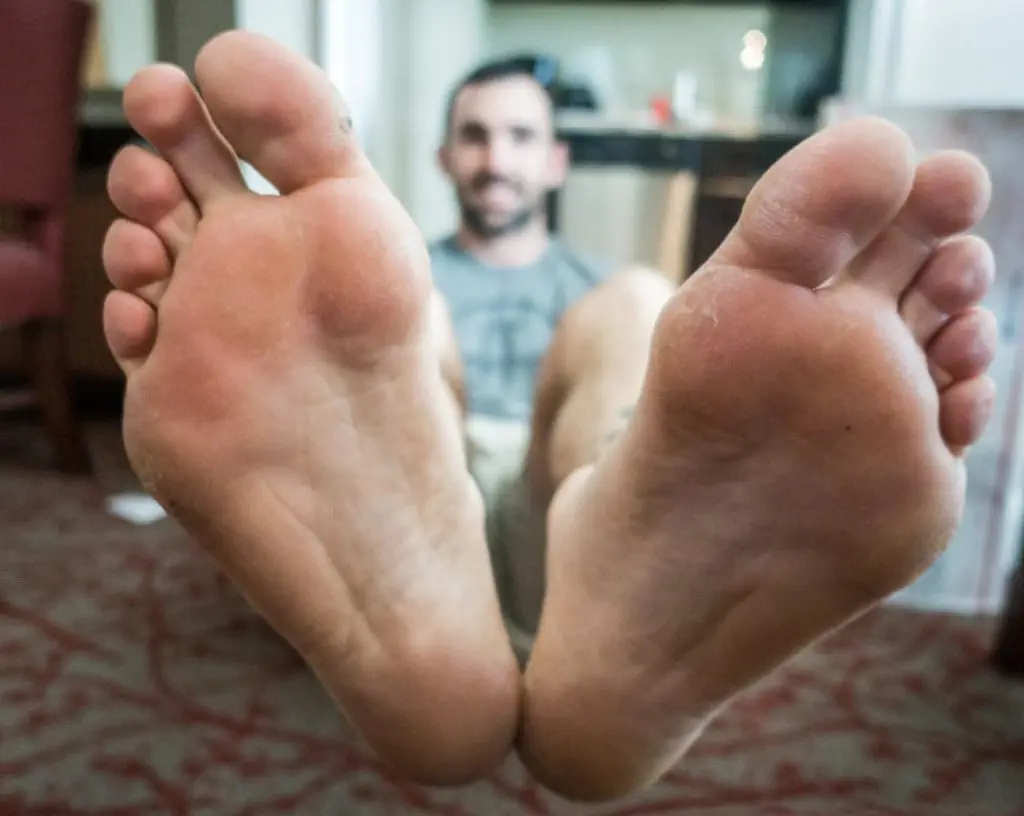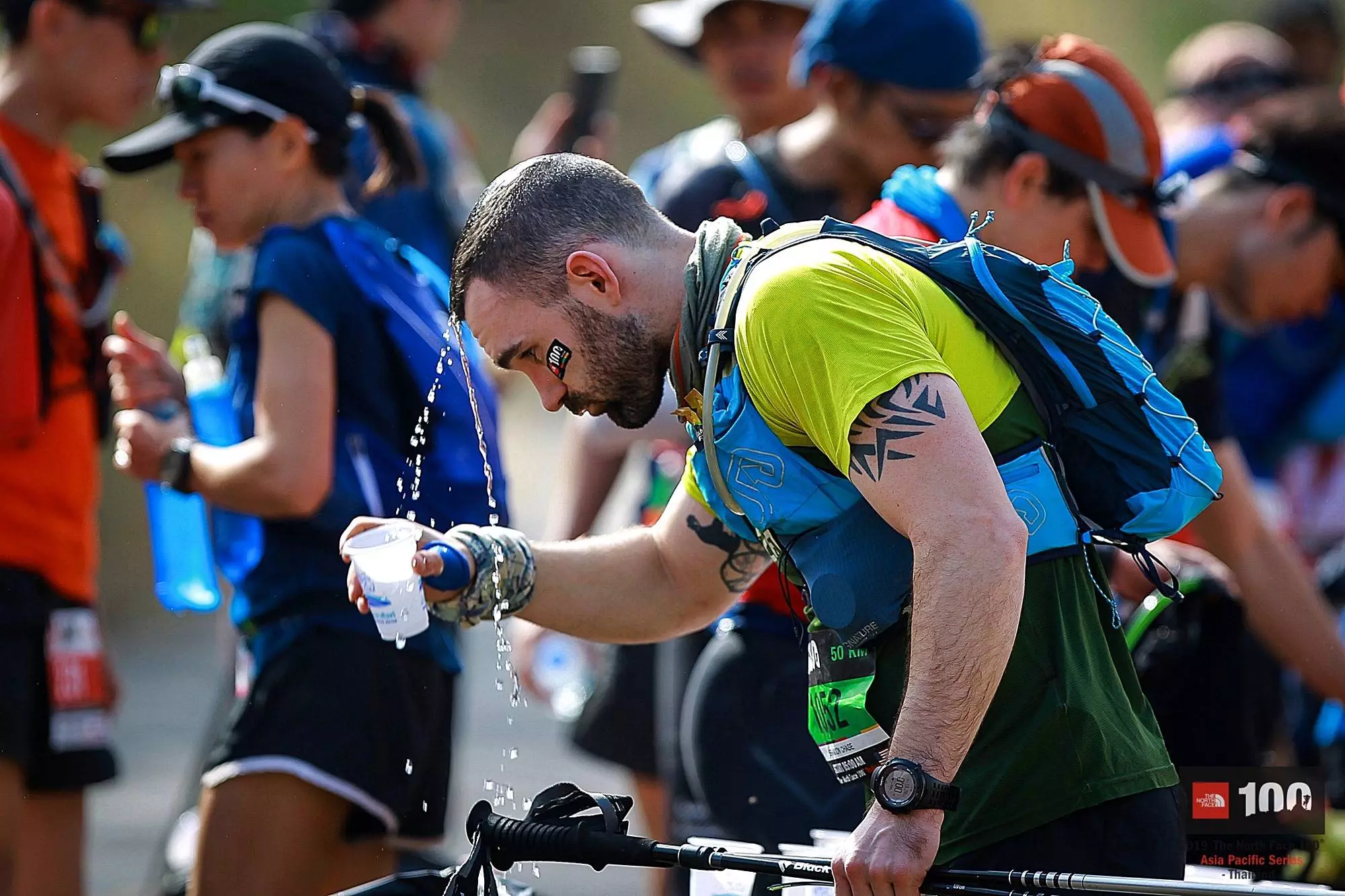Anyone who has gone out for a run in the midday heat of summer understands all too well that temperature and humidity can play a large role in performance. When the air is heavy with moisture, your heart rate is spiking, and sweat is pouring from every orifice, it’s hard not to question your decision to exercise under these conditions. And yet, some of the world’s most competitive races such as Badwater 135 and Marathon des Sables take place in the most extreme heat conditions imaginable.
For the last two years, I lived in Pakistan where the summertime temperatures rarely dropped below 90F and humidity was through the roof. During that period, I trained for and competed in ultramarathons in Thailand and Cambodia (among others), both of which are known for year-round high temperatures. Joe is no stranger to the heat either, having finished second at the Vermont 100 in 2019 during one of its hottest years on record, and also running 50+ miles per day throughout the summer on his Appalachian Trail speed record in 2017.
While I can’t say I ever fully embraced the conditions I trained and raced in, especially being from New England, I did utilize some strategies and gear that helped me get by.
Strategies
Regulate Body Temperature

An essential aspect of performing in the heat is managing your body temperature: too high and you may experience the characteristics of heat exhaustion including cramps, nausea, and dizziness. Left untreated, it could lead to dehydration and heatstroke – an extremely dangerous and potentially fatal condition.
To help regulate your body temperature in these conditions, the first line of defense is limiting direct sun exposure via clothing. This means wearing a hat that shades your face, ears, and neck like the OR Sunrunner, and which may also include UVF protective shirts and arm sleeves. The idea is to deflect as much of the sun’s rays from your skin to keep it from absorbing the heat. In areas where the ambient temperature is high (e.g. humid), external temperature regulation can be useful in the form of ice packs, cold water, or even electric fans at aid stations.
When Joe ran the Vermont 100 in 2019, his crew had an ice bucket with sponges as well as spare dry clothing available at aid stations to help cool him down.
Slow it down
Heat is an additional stress on your body and must be compensated for. It increases your heart rate during exercise, which means you will experience higher aerobic fatigue and you should adjust your goals by slowing your pace and running according to your perceived exertion rather than heart rate. If you’re in the middle of a long race, avoid spending too much time at an effort of 7 or higher (out of 10). Don’t be afraid to stop at aid stations to hydrate and cool down whenever you feel yourself starting to overheat.
When I ran The North Face 100 in Thailand last year, the jungle temperature was brutal. Instead of pushing for the time I had hoped for, I slowed my pace and took advantage of the ice and other resources available at aid stations. I finished more than two hours later than expected, but I avoided a literal and metaphorical meltdown.
Develop a Hydration Plan

Adequate hydration is they keystone to a successful race or event in the heat. Determining and maintaining the proper balance of fluid and electrolytes will help prevent dehydration, cramping, and other heat-related illnesses.
The amount of fluid and electrolyte you take in each hour during exercise should be based on your sweat rate. You can calculate sweat rate by measuring your bodyweight before and after a long run, then divide that number by the hours of exercise. Don’t forget to account for calorie and water intake as well as bathroom stops. You’ll often lose 2%+ of your bodyweight during the course of a race, but if that gets over 5% it can be dangerous to your health so it’s important to replace as much lost fluid as possible. Be careful not to go overboard with hydration, however, as excess intake can lead to hyponatremia (where your electrolytes become abnormally low due to dilution) which causes cramping and a host of other more serious maladies.
Moreover, fast and easy access to hydration is essential. When Joe set the speed record on the Appalachian Trail, he kept his water bottles in the front pockets of his pack straps not only for accessibility, but also accountability as it was easy to determine how much fluid he had taken in. By drinking when he was thirsty and regulating intake according to his sweat rate, he never succumbed to any hydration problems.
Train for It
One of the best ways to excel in hot and humid environments is to train for them. While it isn’t always possible to exactly match the climate of what you expect to experience during your event, there are ways you can condition your body to operate more efficiently when the time comes.
In addition to spending time training at higher temperatures, another method which has proven effective is utilizing a hot bath or dry sauna after a long run. By spending 20-30 minutes in a high-heat situation after stressing your system during a workout, your body is able to make adaptations that will pay dividends on future outings without putting excess stress on your body.
Gear
The strategies noted above are the building blocks of performance in the heat, but there are also a few gear items that can help manage the effects of extreme exposure.
Sweatband

Having sweat pour into your eyes during a hot and steamy run can be very uncomfortable and difficult to fix. Hats help a little but get saturated easily and aren’t ideal for sweat runoff. Even Buff-style headwear also tends to saturate and lose it properties after a long day out. After doing some research on this last year, I came across the Halo II Pullover headband.
Designed for bicyclists to wear under their helmets, it’s a slim and low-profile neoprene band with a silicone strip running across the forehead. This creates a waterproof seal that does not allow sweat to penetrate and run into your eyes. Instead, it shunts it to the side where it can evaporate or run off down the side of your face. I use this on all my hot-weather runs (usually under a hat) and it functions flawlessly.
Liner shorts
Chaffing is one of the top reasons ultrarunners drop from a race. When skin rubs together for hours on end, it creates a lot of friction which leads to the painful redness and the “cowboy” walk you often see racers doing. Excessive sweat caused by high-heat environments can contribute to chaffing because it causes everything to stick together and resist movement. While lubrication such as Vaseline or Body Glide help tremendously in this regard, it all washes away quickly when I’m sweating that much.
However, I have found that wearing liner shorts such as the Saxx Kinetic (for men) can help absorb a lot of the excess moisture while also keeping my thighs from directly rubbing against one another. Combined with a pair of liner-less shorts like those from PATH Projects as well as some lubrication for the harder-to-reach problem areas (re-applied as needed), I have suffered much less from this race-ending and preventable condition.
Electrolytes
As previously mentioned, maintaining a balance of electrolytes and fluid is critical for performance in hot conditions to avoid heat stroke and other more serious conditions. Luckily, this is fairly easy to do as many products exist expressly for this purpose such as Nuun, Tailwind, and Maurten.
Some athletes also supplement purely with salt in tablet form, which can work as well, but you need to be cognizant of how much you’re taking in. Jason Koop, author of Training Essentials for Ultrarunnings notes that “your goal within the first two hours after exercising should be to consumer 500-700 mg of sodium and enough water to equal 1.5 times the water weight you lost during the exercise session. In other words, if you lost 2 pounds (32 ounces) during your workout, you should drink 48 ounces of fluid in the 2 hours after you get back”. This logic also holds for longer runs and races – just be sure to calculate your sweat rate as mentioned above so you know how much to take.
Foot Care

Your feet have over 250,000 sweat glands and disperse half a pint of sweat per day. To avoid merciless blisters and other foot injuries caused by excessive rubbing and hot spots, it pays to manage moisture on your feet. Similar to my recommendation of liner shorts, clothing choice can play a big role on your feet as well. Wearing socks that wick, rather than absorb, moisture can help keep them dry and limit friction. I personally prefer options from Swiftwick and Drymax, which both work well in my experience.
To assist with this, apply lubricant to your feet (Vaseline or Body Glide work well) and change your socks as often as is feasible during a long and hot event. Experiment with various methods and pick up a copy of John Vonoff’s Fixing your Feet to learn more strategies for keeping your feet healthy for the long haul in all conditions.
Final Thoughts
Training and racing in the heat adds additional variables that must be considered by athletes and factored into training. Not only do these conditions require that closer attention be paid to hydration and electrolyte levels, but you can also expect decreased performance and higher risk of heat-related injuries when compared to events in moderate climates.
Despite these constraints, Joe and I have found that there are several strategies you can implement and pieces of gear you can use to lessen the burden and smooth the ride to your next hot-weather race finish. High-temperature events may not be pleasant or attractive for everyone, but just like anything else in this sport it is something you can train and prepare for.
Let us know what tricks you’ve learned for training and performing in the heat!
This post contains affiliate links. I earn a small commission on sales via these links at no additional cost to you. If you'd like to support me, please purchase products through the affiliate links. Thanks!
Brandon Chase is a writer, endurance athlete, and guide based in Maine. He is a former Foreign Service Officer with the U.S. Department of State and spent nearly a decade overseas serving at embassies in Egypt, Cyprus, and Pakistan.
Along with a 98-day thru-hike of the Appalachian Trail, he has summited Mt. Kilimanjaro, hiked the West Highland Way, fastpacked in the Himalayas, and trekked around New Zealand and South Africa. He also regularly competes in ultramarathons at the 50k, 50-mile, and 100-mile distances.



